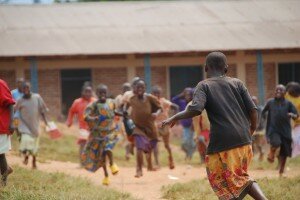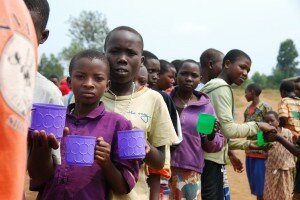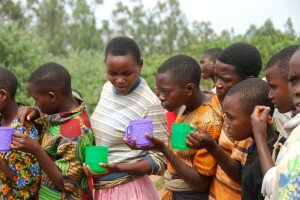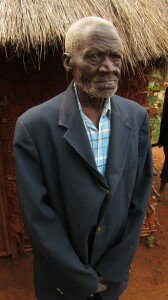In Kenya, neglected tropical diseases (NTDs) are continually gaining more attention. With a recently launched five-year national plan to rid the country of NTDs and focused efforts on eliminating trachoma, the Kenyan government is working tirelessly to advocate for and treat the 1 in 2 Kenyans who suffer needlessly at the hands of NTDs. Below is an excerpt of an article published on AllAfrica.com, the largest electronic distributor of African news and information, that describes the burden of NTDs in Kenya, as well as identifying NTDs as one of the next major issues in global health:

Global Network Senior Resource Development Officer Valerie Fitton-Kane distributes Abendazole at Kahawa West Primary School in Nairobi, Kenya.
For years, HIV/AIDS has caused the government a lot of worry — and with good reason. From the time it was declared a national disaster, there have been numerous campaigns to sensitise the public, drowning Kenyans in information. Today, it is almost impossible to find anyone in Kenya who does not know anything about HIV/AIDS.
But now there is a new problem kid on the block: neglected tropical diseases. These are a group of chronic diseases with serious consequences that affect populations living in low-income rural areas of Africa, Asia, and the Americas. It is for this reason that neglected tropical diseases are also known as the diseases of the poor. The World Health Organisation (WHO) estimates that at least one billion people are infected with neglected tropical diseases. In Kenya, about 50 per cent of the total population is infected with at least one neglected tropical disease. This has prompted the government to start to shift uncomfortably — having half the population sick does not exactly sit well on the road map to achieving Vision 2030. The Ministry of Public Health and Sanitation has, therefore, embarked on a mission to fight the diseases. Click here to continue reading.




